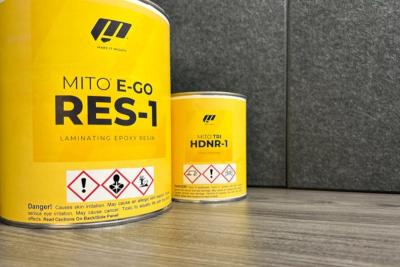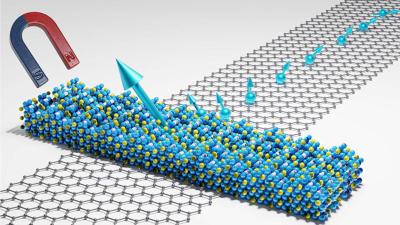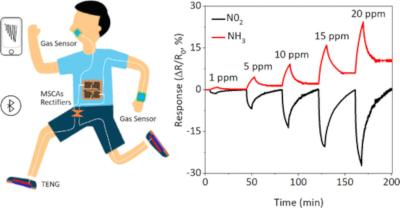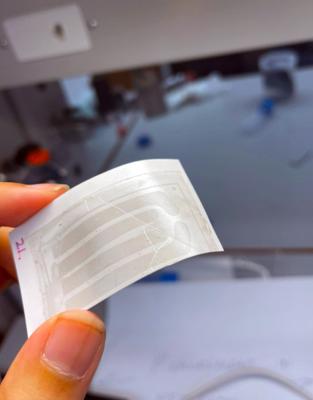The Graphene-Info weekly newsletter
Published: Tue, 04/18/23
The Graphene-Info newsletter (April 20, 2023)
Cannot read this? View it online here
Mito Materials launches graphene additives for composites
U.S-based specialty chemical company, Mito Material Solutions, recently announced its first ready-to-pour graphene product. In partnership with industrial coatings manufacturer Forrest Technical Coatings, Mito has harnessed its patented technology platform for the production of functionalized graphene into ready-to-pour hybrid additives with chemical and physical bonding points.
The first two available ready-to-pour products are Mito E-Go Res-1, a laminating epoxy resin, and Mito Tri-Hdnr-1, an epoxy hardener. The ready-made products may be used separately but their formulas are optimized to work together.
GMG updates on the commercialization efforts of its THERMAL-XR
Graphene Manufacturing Group (GMG) has provided an update on its THERMAL-XR (TXR) product, noting that since the recent Australian government approval for GMG to produce and sell Thermal-XR at scale, the company has driven sales activities and bolstered related production capacity.
GMG said important first sales at scale have recently been secured, including an order for over AUD$130,000 (over USD$86,770), and its efforts to widen potential market segments are finding positive reception, providing strong encouragement for continued sales focus targeting near-term notable revenues. The recent order for THERMAL-XR, from a large Australian eco-friendly resort for the coating of nearly 200 air conditioners, represents the largest single order for THERMAL-XR, the company said.
Levidian strikes deal with Luxembourg's Stugalux for LOOP tech implementation
Levidian has announced a deal with Luxembourg construction company Stugalux to bring its innovative decarbonization technology to mainland Europe for the first time.
Levidian’s LOOP device uses a patented low temperature, low pressure process to crack methane into its constituent atoms, hydrogen and carbon, without the need for catalysts of additives. The carbon is locked away in the form of graphene. Stugalux will be deploying LOOP to process biomethane produced from food and agricultural waste. This gas will be cracked into its constituent atoms by LOOP, with the resultant hydrogen-rich blend combusted in a turbine to generate electricity while reducing carbon emissions. The graphene produced by LOOP will be integrated into the building products used by Stugalux to improve performance and drive further decarbonization.
Graphene Innovations Manchester signs $1 billion deal to tackle global sustainability challenges
A spin-out company from the graphene innovation ecosystem at The University of Manchester has formed an international partnership that will spearhead an unprecedented scale-up of graphene-based technologies intended “to make a substantial impact on global CO2 emissions”.
UK-based Graphene Innovations Manchester (GIM), founded by University graduate Dr Vivek Koncherry, has signed a Memorandum of Understanding (MoU) with Quazar Investment Company to create a new company in the UAE. This UK-UAE partnership - which highlights potential opportunity for UK innovators to access global investment and international markets and supply chains - will be one of the most ambitious projects to date to commercialize graphene as it fast-tracks cutting-edge R&D into large-scale manufacture – an investment vision worth a total of $1billion.
Researchers demonstrate graphene-based 2D magnetic device at room temperature
A research team at Chalmers University of Technology, Lund University and Uppsala University in Sweden have managed to create a device made of a two-dimensional magnetic quantum material that can work in room temperature. Quantum materials with magnetic properties are believed to pave the way for ultra-fast and considerably more energy efficient computers and mobile devices, but until now, these types of materials tended to only work in extremely cold temperatures.
The group of researchers has been able to demonstrate, for the very first time, a new two-dimensional magnetic material-based device at room temperature. They used an iron-based alloy (Fe5GeTe2) with graphene which can be used as a source and detector for spin polarized electrons. The breakthrough is believed to enable a range of technical applications in several industries as well as in our everyday lives.
HydroGraph announces closing of private placement
HydroGraph Clean Power has announced the completion of a non-brokered private placement, with gross proceeds of approximately CAD$2.31 million (over USD$1,700,000).
“It is quite an exciting time where we close another oversubscribed successful funding round with strong support from our shareholders, management and new investors,” said Stuart Jara, CEO of HydroGraph. “Funding will allow us to accelerate the commercialization of our graphene including business development and customer acquisition activities. The Board and I are appreciative of the continued support of the Company, our strategy and our focus on creating shareholder value.”
Researchers report giant magnetoresistance of Dirac plasma in high-mobility graphene
Researchers from the University of Manchester and University of Lancaster have exposed high-quality graphene to magnetic fields at room temperature and measured its response.
"Over the last 10 years, electronic quality of graphene devices has improved dramatically, and everyone seems to focus on finding new phenomena at low, liquid-helium temperatures, ignoring what happens under ambient conditions," says materials scientist Alexey Berdyugin from the University of Manchester. "We decided to turn the heat up and unexpectedly a whole wealth of unexpected phenomena turned up."
Haydale to work with CERN on graphene-enhanced lubricants
Haydale recently announced it will be partnering with CERN, the European particle physics laboratory, on a new project aimed at improving the durability of the lubricants currently used on some of the world’s largest particle physics equipment including the Large Hadron Collider.
Polymers in the oils and greases currently used are heavily susceptible to radiation damage leading to degradation of the lubricant. Using Haydale’s HDPlas® process, the aim is to increase the lifetime of the lubricants by adding functionalized nanomaterials, including graphene. The goal is to increase the material’s resistance and better dispersion characteristics should help to achieve this. As well as the potential for significant cost savings, increasing the service life of the lubricants in use is perhaps even more important given the highly limited access there is in these areas.
Researchers design novel device that combines graphene and high-temperature superconductors
Researchers from the SUNY Polytechnic Institute, Stony Brook University and the Brookhaven National Laboratory in the US, along with Aalto University in Finland, have demonstrated a new electronic device that employs the unique ways in which electrons behave in graphene and high-temperature superconductors.
The experiment, led by Sharadh Jois and Ji Ung Lee from SUNY with the support of theoretical work done by Jose Lado, assistant professor at Aalto, demonstrated a new quantum device that combines both graphene and an unconventional high-temperature superconductor.
Researchers use graphene foam to develop standalone sensors that use movement to monitor health and environment
A Penn State-led international collaboration has developed a self-powered, standalone sensor system capable of monitoring gas molecules in the environment or in human breath. The system combines nanogenerators with micro-supercapacitors to harvest and story energy generated by human movement.
The researchers' tech should cost up to just a few dollars for materials and uses widely available equipment. The development is the culmination of years of work led by corresponding author Huanyu “Larry” Cheng, James L. Henderson Jr. Memorial Associate Professor of Engineering Science and Mechanics at Penn State.
Researchers design breakthrough graphene-based cardiac implant
A team of researchers, led by Northwestern University and the University of Texas at Austin (UT), has developed a graphene-based cardiac implant. Similar in appearance to a temporary tattoo, the new graphene “tattoo” implant is thinner than a single strand of hair yet still functions like a classical pacemaker. But unlike current pacemakers and implanted defibrillators, which require hard, rigid materials that are mechanically incompatible with the body, the new device softly melds to the heart to simultaneously sense and treat irregular heartbeats. The implant is thin and flexible enough to conform to the heart’s delicate contours as well as stretchy and strong enough to withstand the dynamic motions of a beating heart.
After implanting the device into a rat model, the researchers demonstrated that the graphene tattoo could successfully sense irregular heart rhythms and then deliver electrical stimulation through a series of pulses without constraining or altering the heart’s natural motions. The technology also is optically transparent, allowing the researchers to use an external source of optical light to record and stimulate the heart through the device.
Metalgrass LTD
9 Har Tsin St.
Kfar Sava Hasharon 4430809
ISRAEL
Unsubscribe | Change Subscriber Options







